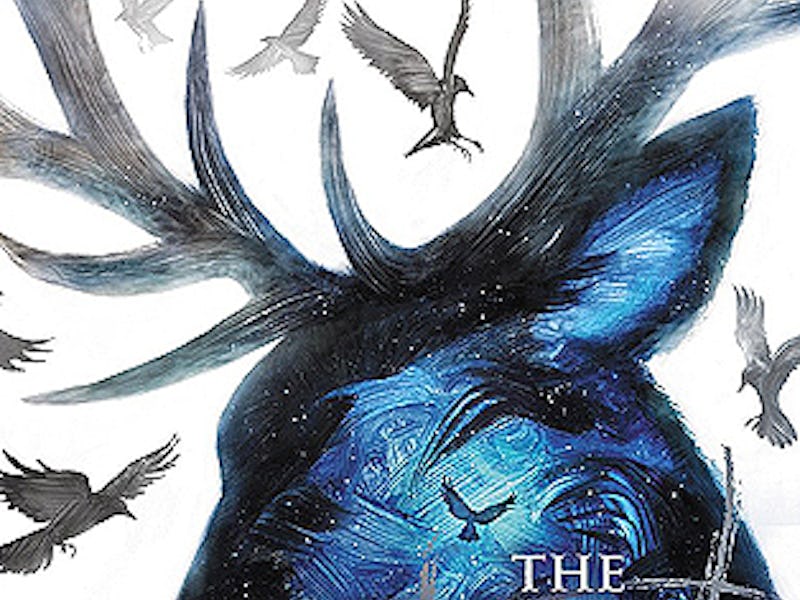'The Raven Cycle' Series Was 2016's Most Subversive Fantasy
Maggie Stiefvater's series ended this year. Here's why it's the best fantasy of 2016.

By all accounts, 2016 has not been the best year, between a series of unsettling world events (Trump, Brexit, Aleppo) and a large number of celebrity deaths (Bowie, Prince, Alan Rickman). Luckily, it’s had some great offerings in fantasy — because when the real world gets tough, fiction offers a far more pleasant lens to parse out our own reality. Among them, one stands out: Maggie Stiefvater’s Raven Cycle quartet, which saw its conclusion in April with The Raven King.
Although the three prior installments came out in previous years, the series runs together as one long story. That’s why The Raven Cycle as a whole brightens 2016: The series breaks all boundaries.
1. There’s no love triangle.
From the outside, the story is about a poor girl named Blue who accidentally falls in with a group of wealthy prep school boys on a quest to wake a sleeping Welsh king. So far, so fantasy. She has a love triangle with two of them, each member of the group learns about himself and the others along the way, and it wraps up with an neat bow, right?
Wrong. Rather than drag out tediously, the love triangle falls by the wayside in favor of a far more intriguing relationship — between Adam and Ronan.
2. There’s no queerbaiting in the series, only three dimensional queer characters.
One character is revealed to be gay, but the way Steifvater reveals it in bits and pieces, “She wore a dress Ronan thought looked like a lampshade. Whatever sort of lamp it belonged on, Gansey clearly wished he had one. Ronan wasn’t a fan of lamps,” is ingenious.
His sexuality is both integral to his personality and beside the point; Ronan Lynch is the most complex gay teen in fantasy today.
3. The series breaks all conventional narrative rules.
It’s ostensibly YA, but several of its POV characters are adults — including the most delightful, poetry-loving hitman the world has seen. Even stranger than focusing on adults in YA is the fact that it’s ostensibly a story with a beginning, middle, and end and yet it meanders and lets its characters hang out in general stores and go drag-racing, even when it isn’t plot convenient.
The second and best book of the series takes an entire detour to prominently feature a gloriously fucked-up character (Kavinsky) who ends up being of little consequence to the rest of the plot solely, because he’s important to Ronan’s character development. This is a mainstream series that cares about words and language and character over plot; that laughs in the face of convention. It’s a strange series that shouldn’t have happened, or at least become a bestseller, yet it did.
You really didn’t see the sadness or the longing unless you already knew it was there. But that was the trick, wasn’t it? Everyone had their disappointment and their baggage; only, some people carried it in their inside pockets and not on their backs.
In today’s era of franchises and formulaic plots, to find one that proudly defies it is rare even in the book world.
4. The series subverts the hell out fantasy genre tropes.
The Raven Cycle contains most of the expected fantasy genre tropes — high stakes, quests, poor boys from poor families discovering heretofore unknown magical skills, forbidden love — and yet it turns each of these concepts on their heads.
Raven King spoiler alert
The delightful twist of the Chosen One narrative being mostly ignored until the 11th hour, for example: The stakes, in the end, turn out to be less high than they seemed, as Gansey only dies for about a minute. Adam’s unknown magical skills are not marvelous, but strange and a dangerous burden.
The Raven Cycle Series is a breath of fresh air in the fantasy landscape, and though it concluded in 2016, it promises a bright path ahead for fantasy.